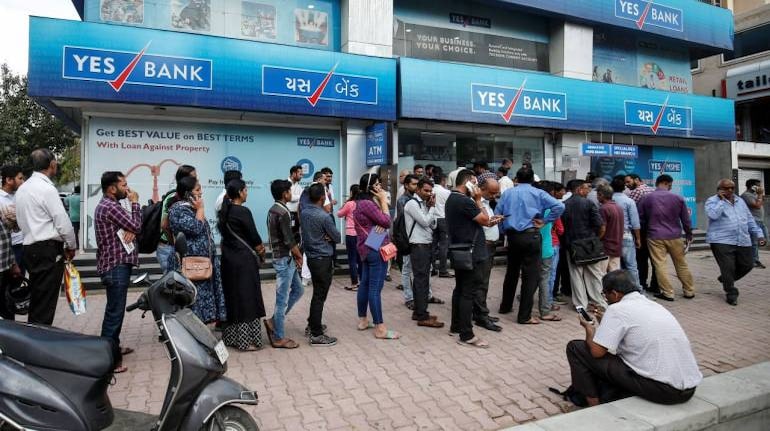

The valiant rescuers of Rana Kapoor-founded Yes Bank may have a tougher job in hand than what they initially assessed.
Yes Bank’s third quarter numbers and the finer details of the bail-out scheme shows that more pain is probably awaiting the new management and investors in the Mumbai-based bank’s tricky balance sheet.
What’s bad?
The bank, undergoing a government-initiated bail out executed by a bank consortium led by the State Bank of India (SBI), has 18.87 percent Gross NPAs (non-performing assets), which is up from 7.39 percent logged in the September quarter.
In absolute terms, Rs 40,709 crore of Yes Bank’s loan book is now tagged as GNPAs. This is significantly higher than what most analysts had expected at around 12 percent.
Breaking up the NPA chart, out of the Rs 40,709 crore, about 97 percent or Rs 39, 501 crore are corporate NPAs.
Retail and MSME (micro, small and medium enterprise) constitutes only Rs 1,208 crore.
Yes Bank’s love for big ticket corporate loans has cost the bank dearly. Essentially, this GNPA number means that a large chunk of corporate loans have turned bad in the third quarter as expected by analysts.
The pain is not over for Yes Bank’s rescue team. Loans in the special mention account (SMA) category tells what is coming. Yes Bank has Rs 11, 528 crore SMA 1 loans or loans where payment is overdue by up to 60 days and Rs 2,383 crore SMA2 loans (payment overdue up to 90 days).
What’s looks good?
The repairing work and the clean-up has begun under RBI administrator, Prashant Kumar.
In Q3, the bank provided Rs 24,766 crore in the third quarter, as compared to just Rs 1,336 crore it did in the second quarter.
Logically, this has reflected in the bottomline with a net loss of Rs 18,560 crore. The provision coverage ratio has been increased in Q3 to 73 percent from 43 percent in the previous quarter.
This means, the bank has a better cushion now to raise further capital and repair the cracked balance sheet. The new management has given a slippage guidance of up to 5 percent for FY21 and improvement thereafter.
The rescue team has gotten bigger with a total of eight leading banks in the consortium. Besides SBI, the consortium now has HDFC Ltd, ICICI Bank, Axis Bank, Kotak Mahindra, Federal Bank, Bandhan Bank and IDFC First. These investors are pooling in amounts between Rs 250 crore to Rs 1,000 crore. SBI, leading the consortium, will invest Rs 6,050 crore. All investors have a lock in period of 75 percent of their investments in the bank for three years.
Also read | Yes Bank rescue plan: 3-year lock-in may not be bad for equity shareholders
The ugly part
The speculation over the fate of Additional Tier 1 (AT-1) bond holders seems to have ended with the bank informing the exchanges that this portfolio will be written down completely.
“In light of the above provisions of the Basel III Circular, the Perpetual Subordinated Basel III Compliant Additional Tier I Bonds issued by the Bank for an amount of Rs 3,000 crores on December 23, 2016 and the Perpetual Subordinated Basel III Compliant Additional Tier I Bonds issued by the Bank for an amount of Rs 5,415 crores on October 18, 2017 have been fully written down and stand extinguished with immediate effect,” Yes Bank’s administrator Prashant Kumar informed exchanges on March 14.
Even for retail equity investors, there is a reason to worry. All shareholders holding 100 or more shares will have to keep 75 percent of their holding under the three year lock-in period. “Accordingly, all shareholders holding 100 or more Equity Shareholders are advised to exercise utmost caution while dealing in the script of the Bank and be guided by the enclosed Scheme,” Yes Bank said.
The takeaway
There is no parallel in India when it comes to the way Yes Bank’s rescue has been structured. Half of the private banking industry and India’s largest bank, SBI, has been nudged by the government and the Reserve Bank of India (RBI) to fork out money for the biggest rescue of a new age private bank India has seen in the post-liberalisation era.
But, not all ends well here. Analysts say this rescue will have implications on the banking sector for a long period.
Private banks, which until now were perceived as safer bets than traditional state-run banks, will have to fight the fear in customers’ minds for a long time to come.
The total write down of AT1 bond portfolio will make capital raising tougher for the industry. But, the decision to bring in all major private banks into the rescue deal will add some comfort to Yes Bank’s depositors.
Note: The investment figure of SBI has been updated as per the latest exchange notification.
Discover the latest business news, Sensex, and Nifty updates. Obtain Personal Finance insights, tax queries, and expert opinions on Moneycontrol or download the Moneycontrol App to stay updated!